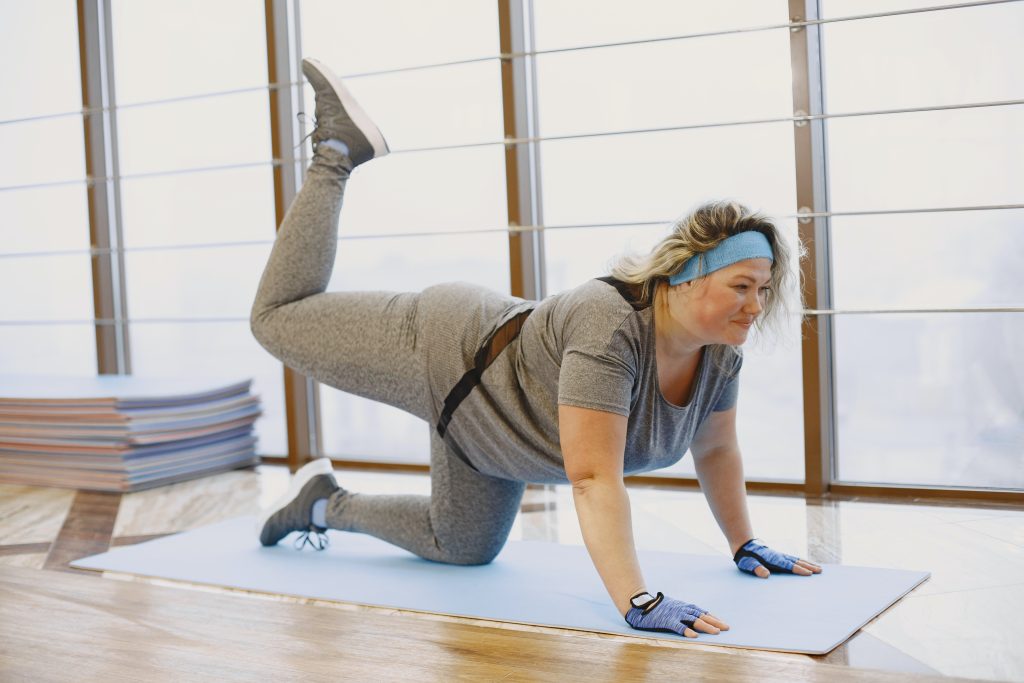Discover effective yoga poses to help relieve postpartum back pain.
Yoga Poses to Alleviate Postpartum Back Pain

Being a new mother is an incredibly joyous and fulfilling experience. However, it also comes with its fair share of challenges, and one common issue that many new moms face is postpartum back pain. The good news is that there are effective ways to alleviate this discomfort, and one of them is through the practice of yoga. In this article, we will explore various yoga poses that can help ease postpartum back pain and promote overall healing and well-being.
Understanding Postpartum Back Pain
Before delving into the yoga poses, it’s important to understand the factors that contribute to postpartum back pain. During pregnancy, the body undergoes numerous changes, including weight gain and hormonal shifts, which can lead to strain on the back muscles and ligaments. Additionally, the act of giving birth puts significant pressure on the lower back. All these factors combined can result in discomfort and pain that persists well into the postpartum period.
Postpartum back pain is a common concern among new mothers, and it can greatly impact their daily lives. The pain can range from mild discomfort to severe, debilitating agony. It can make it challenging to perform simple tasks like lifting the baby or even sitting for extended periods. Understanding the causes and duration of postpartum back pain is essential in finding effective ways to alleviate and manage it.
Causes of Postpartum Back Pain
There are several common causes of postpartum back pain. One major factor is the weakening of the core muscles due to pregnancy and childbirth. The core muscles play a crucial role in supporting the spine, and when they are weak, the back tends to bear more stress. This increased stress can lead to muscle imbalances and strain, resulting in pain.
In addition to weakened core muscles, hormonal fluctuations can also contribute to back pain. During pregnancy, the body produces hormones like relaxin, which loosen the ligaments in the pelvic area to prepare for childbirth. While this is necessary for the birthing process, it can lead to instability in the pelvic region and put extra pressure on the back, causing discomfort and pain.
Furthermore, the physical act of giving birth can put significant strain on the lower back. Whether through vaginal delivery or cesarean section, the body undergoes immense pressure and stretching, which can lead to muscle soreness and inflammation in the back.
How Long Does Postpartum Back Pain Last?
Postpartum back pain varies from woman to woman, and the duration can also differ based on individual factors such as overall fitness level, childbirth method, and pre-existing back issues. However, on average, postpartum back pain can last anywhere from a few weeks to several months.
It’s important to address and manage the pain to prevent it from becoming a chronic issue. Seeking professional guidance from a healthcare provider or a physical therapist can help in developing a personalized plan to alleviate the pain and promote healing. This plan may include exercises, stretches, and lifestyle modifications to strengthen the core muscles, improve posture, and reduce strain on the back.
Additionally, incorporating relaxation techniques such as yoga or meditation can help reduce stress and tension in the body, which can contribute to back pain. These practices not only provide physical benefits but also promote mental well-being, which is crucial during the postpartum period.
Remember, every woman’s postpartum journey is unique, and it’s essential to listen to your body and give it the care and attention it needs. With proper self-care, support, and guidance, postpartum back pain can be effectively managed, allowing new mothers to fully enjoy the precious moments of motherhood.
The Role of Yoga in Pain Relief
Yoga has been practiced for centuries and is known for its ability to promote flexibility, strength, and relaxation in the body and mind. It is a holistic practice that encompasses physical postures, breathing exercises, and meditation techniques. When it comes to postpartum back pain, yoga can be highly beneficial in several ways.
Postpartum back pain is a common issue that many new mothers experience. The physical demands of pregnancy and childbirth can put strain on the back muscles and ligaments, leading to discomfort and pain. Engaging in a regular yoga practice can help alleviate these symptoms and aid in the recovery process.
Benefits of Yoga for Postpartum Recovery
One of the key benefits of yoga for postpartum recovery is its ability to strengthen the core muscles. The core muscles, including the abdominal and back muscles, play a crucial role in providing support to the spine. By practicing yoga, new mothers can gradually strengthen these muscles, which in turn provides better support to the spine and reduces back pain.
In addition to strengthening the core muscles, yoga also improves flexibility and posture, both of which are essential for maintaining a healthy back. The gentle stretching and bending movements in yoga help to increase flexibility in the muscles and joints, reducing stiffness and promoting better range of motion. Moreover, practicing yoga regularly can help correct poor posture habits that may have developed during pregnancy, leading to improved alignment and reduced strain on the back.
Furthermore, the deep breathing techniques used in yoga help to release tension and promote relaxation, which can further alleviate discomfort. Deep breathing increases oxygen flow to the muscles and promotes a sense of calm and well-being. This can be particularly beneficial for new mothers who may be experiencing stress or anxiety along with their back pain.
Safety Precautions for Postpartum Yoga
While yoga offers numerous benefits for postpartum back pain, it’s essential to approach the practice with caution and listen to your body. Every woman’s postpartum recovery is unique, and what may be suitable for one person may not be suitable for another. It is important to start with gentle yoga poses and gradually progress to more advanced poses as your strength and flexibility improve.
It is also advisable to consult with your healthcare provider before starting any new exercise regimen, especially if you had a complicated delivery or are experiencing severe pain. Your healthcare provider can assess your individual situation and provide guidance on the most appropriate exercises and modifications for your postpartum recovery.
In conclusion, yoga can be a valuable tool in relieving postpartum back pain. Its ability to strengthen the core muscles, improve flexibility and posture, and promote relaxation make it an ideal practice for new mothers. However, it is important to approach yoga with caution and seek guidance from a healthcare professional to ensure a safe and effective recovery.
Essential Yoga Poses for Postpartum Back Pain
Now that we have established the importance of yoga for postpartum back pain, let’s explore some essential poses that can provide relief and promote healing.
Postpartum back pain is a common issue that many new mothers experience. The physical strain of pregnancy and childbirth can take a toll on the body, especially the back. Yoga poses can be a gentle and effective way to alleviate this pain, strengthen the muscles, and improve flexibility.
During the postpartum period, it’s important to listen to your body and start with gentle yoga poses, especially if you are a beginner or experiencing more severe back pain. These poses target the core muscles and promote spinal alignment, helping to alleviate discomfort and promote healing.
Gentle Yoga Poses for Beginners
For beginners or those experiencing more severe back pain, it’s best to start with gentle yoga poses that target the core muscles and promote spinal alignment. Child’s Pose, Cat-Cow Pose, and Pelvic Tilt are excellent options to gently stretch and strengthen the back while improving flexibility.
Child’s Pose, also known as Balasana, is a restorative pose that helps release tension in the lower back. By gently stretching the spine and hips, it can provide relief from postpartum back pain. Cat-Cow Pose, or Marjaryasana-Bitilasana, is a dynamic movement that helps improve spinal flexibility and strengthen the core muscles. Pelvic Tilt, or Setu Bandhasana, is a gentle backbend that engages the glutes and lower back, promoting stability and alignment.
These poses can be modified to suit your comfort level and can be practiced daily to gradually alleviate back pain and improve overall well-being.
Advanced Yoga Poses for More Flexibility
As you gain strength and flexibility, you can gradually incorporate more advanced yoga poses into your routine. Poses like Bridge Pose, Sphinx Pose, and Cobra Pose can help open up the chest, stretch the back, and promote overall spine health.
Bridge Pose, or Setu Bandhasana, is a backbend that strengthens the glutes, hamstrings, and lower back while opening up the chest. Sphinx Pose, or Salamba Bhujangasana, is a gentle backbend that helps improve posture and relieve tension in the spine. Cobra Pose, or Bhujangasana, is a more intense backbend that strengthens the back muscles and increases flexibility.
These advanced poses should only be attempted once you have built a solid foundation of strength and flexibility through regular practice of the gentle yoga poses. It’s important to listen to your body and not push yourself too hard, as this can lead to further injury or strain.
Incorporating these essential yoga poses into your postpartum routine can provide relief from back pain, promote healing, and improve overall well-being. Remember to always practice with mindfulness and consult with a healthcare professional before starting any new exercise regimen.
Creating a Yoga Routine for Back Pain Relief
Consistency is key when it comes to reaping the benefits of yoga for postpartum back pain. Creating a regular practice that fits into your daily routine will ensure long-term relief and overall well-being.

Incorporating Yoga into Your Daily Routine
Find a time of day that works best for you and designate it as your yoga time. It could be early in the morning before the baby wakes up or during nap time. Start with a few minutes of gentle stretching and gradually increase the duration as you progress. Remember, even a short yoga session can be highly beneficial.
Tips for Maintaining Consistency in Your Yoga Practice
Staying committed to your yoga practice can be challenging as a new mom, but incorporating a few simple strategies can help you stay on track. Set realistic goals, celebrate small achievements, and find a support system, whether it’s a friend or an online community. Remember, consistency and self-care are essential for both your well-being and that of your baby.
Consultation and Guidance
While yoga can be highly effective in alleviating postpartum back pain, it’s crucial to seek professional guidance and listen to your body throughout the process.
When to Consult a Doctor
If you experience persistent or severe back pain, it’s important to consult your healthcare provider. They can evaluate your condition and provide appropriate advice or refer you to a specialist, if necessary.
Seeking Guidance from a Professional Yoga Instructor
If you’re new to yoga or have specific concerns related to postpartum recovery, consider working with a certified yoga instructor who specializes in postnatal yoga. They can guide you through safe and effective yoga routines tailored to your needs, ensuring you get the most out of your practice.
Remember, healing takes time, and each person’s journey is unique. By incorporating yoga into your postpartum routine, you can not only alleviate back pain but also nourish your body and mind, promoting overall health and well-being.



